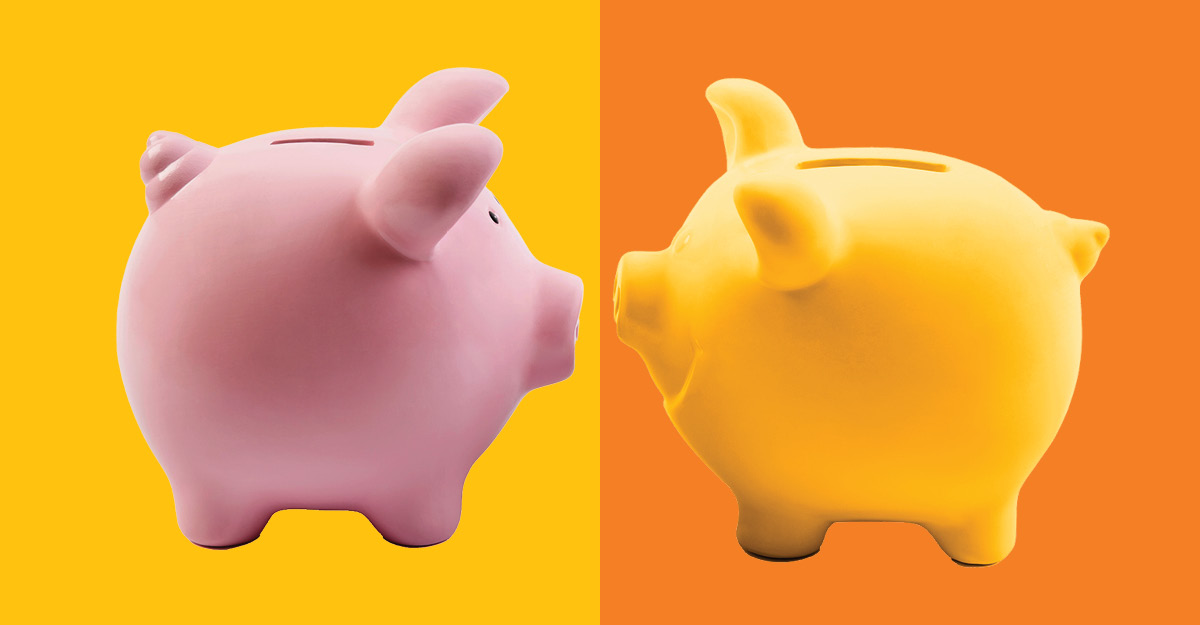What’s your Best Savings Option?
Minute Read

The many types of saving options that are available can make you feel overwhelmed and confused, but we are here to help! Deciding which account is best for you and your situation mostly depends on the amount of money of you are saving, how much money is coming in (cash flow), and how you want to use your savings. Let’s dig in and learn more!
Regular Savings Accounts
The regular savings account is what every member opens when they start their membership. This account is federally insured and requires only $5 to stay in the account. We put that $5 to the side, and then you start with a $0 balance. We do not require a minimum balance, other than your $5 opening deposit. Some financial institutions require a minimum balance, or you will be charged a fee.
Once your balance hits $50, you will then begin to earn dividends. You may withdraw funds without penalty. Effective June 1, 2020, the Federal Reserve lifted the Regulation D rule. This rule limited the electronic transfers and withdrawals from savings accounts at financial institutions. We are no longer required to impose this rule, which impacts the number of transactions and withdrawals you can make.
Supplemental Savings Accounts
We also offer a supplemental savings account, which works like a regular Savings account. It’s simply an additional Savings account. You may name this anything you would like. The downside is that annual percentage yields (APYs) on regular savings accounts tend to be lower than the rates of return on other types of savings and investment accounts.
Both a regular savings account and a supplemental savings account may be used as an overdraft protection source. Overdraft protection is a service that allows funds to automatically be transferred from other Members 1st products to cover any overdrafts in your checking account. Unlike some financial institutions, we offer overdraft protection free of charge.
Money Management Accounts
This is another option which is sometimes called a money market account. (This is not a money market fund, which is a mutual fund. Those accounts are handled by our Investment Services and Wealth Management team.) This account works the same way as a regular Savings account and can be accessed at any time. However, the account has a "tiered" rate structure. It offers higher dividends based on your account balance. A Money Management account is specifically designed to help you achieve long-term savings goals, but the funds aren’t "locked-in."
Savings and Club Accounts
These accounts allow you to save for the holidays or vacation or any other need. No minimum deposit is required, and you can open these accounts at any time during the year. You may make deposits in any amount at any time.
The funds transfer automatically to your regular savings account on October 1 for a holiday club and on April 1 for the vacation club. There is a fee for early withdrawal, which is a standard at most financial institutions.
Certificates
If you are in the position to put money into an account and leave it for a longer period, you could consider investing in share certificates. These are also called savings certificates at other financial institutions. The key benefit to certificates is that you can earn a higher return, depending on the term or length of the certificate.
You agree not to touch the money for a fixed period of time, which can run from a few months to five years or more. However, if you decide to withdraw before the end of the term, you could face early withdrawal penalties.
The Bottom Line
Remember that the type of savings plan that you choose may not be the same as your friends or family. The choice comes down to how much money you want to put into savings, what kind of access you need to the money, and how long you can let it sit and grow. Take the time to compare rates, minimum balances and fees.
We are here to help you make your decision! Contact our Customer Service team at (800) 237-7288, or stop into any branch.



